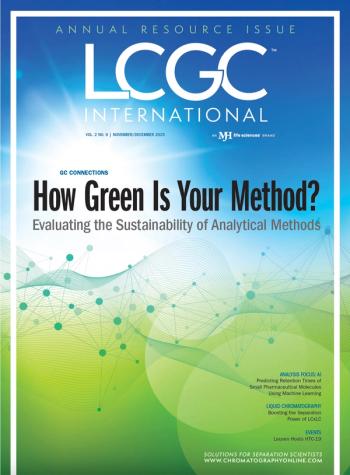
- The Column-02-03-2014
- Volume 10
- Issue 2
GC–MS investigates cheese made from human bacteria
Researcher Christina Agapakis from the University of California, Los Angeles, USA, has come up with an unusual way of making cheese by taking bacteria from various parts of the human body and analyzing the odour of each cheese produced using headspace gas chromatography?mass spectrometry (GC?MS).
Researcher Christina Agapakis from the University of California, Los Angeles, USA, has come up with an unusual way of making cheese by taking bacteria from various parts of the human body and analyzing the odour of each cheese produced using headspace gas chromatography–mass spectrometry (GC–MS).1
Agapakis’ interest was piqued by the similarities between cheese and human microdiversity. Many of the smells that are used to describe cheese originate from the human body. “Many of the stinkiest cheeses are hosts to species of bacteria closely related to the bacteria responsible for the characteristic smells of human armpits or feet,” Agapakis commented. Swabs were taken from the hands, feet, noses, and armpits of subjects and inoculated into fresh, pasteurized, organic, whole milk. The samples were incubated overnight at 37 °C and the curds strained and pressed to produce the cheese.
The team found that even though the same milk and the same processes were used to produce the cheeses, they differed in colour, texture, and odour as a result of the different bacteria that were cultured.
The team analyzed the bacteria in the cheese using 16S ribosomal RNA sequencing. Several different species of bacteria were identified in the cheese that had also been found in metagenomic sequencing of isolates from the human body. In particular, Proteus vulgaris, closely related to Proteus mirabilis (found on hands, feet, noses, and in armpits) is found on cheeses and is noted for its strong aroma; Enterococcus faecalis (found in armpits) is a lactic acid bacteria found in raw milk and cheese; and Hafnia alvei (found in armpits) is an enterobacteria common in cheese and is added as a secondary culture in artisanal cheeses for a cauliflower-like flavour.
Headspace GC–MS was performed to identify volatile organic compounds and characterize the odour of each cheese. Agapakis commented: “This is cheese not for eating but for smelling, and for thinking about our very personal connections to the microbial world.”
The cheeses have just been exhibited at the Science Gallery of Trinity College Dublin, Ireland.
Reference
1.
Articles in this issue
almost 12 years ago
Archaeochemical Evidence Uncovers Nordic "Grog"almost 12 years ago
Protecting the Consumeralmost 12 years ago
Food for Thought: RAFA 2013 Reviewalmost 12 years ago
Glycans Marker for Gastric Canceralmost 12 years ago
Soluble Fraction Analysis in Polypropylenealmost 12 years ago
Tips & Tricks GPC/SEC: How to Install GPC/SEC Columnsalmost 12 years ago
Pittcon 2014 Previewalmost 12 years ago
Vol 10 No 2 The Column February 03, 2014 North American PDFalmost 12 years ago
Vol 10 No 2 The Column February 03, 2014 Europe and Asia PDFNewsletter
Join the global community of analytical scientists who trust LCGC for insights on the latest techniques, trends, and expert solutions in chromatography.



